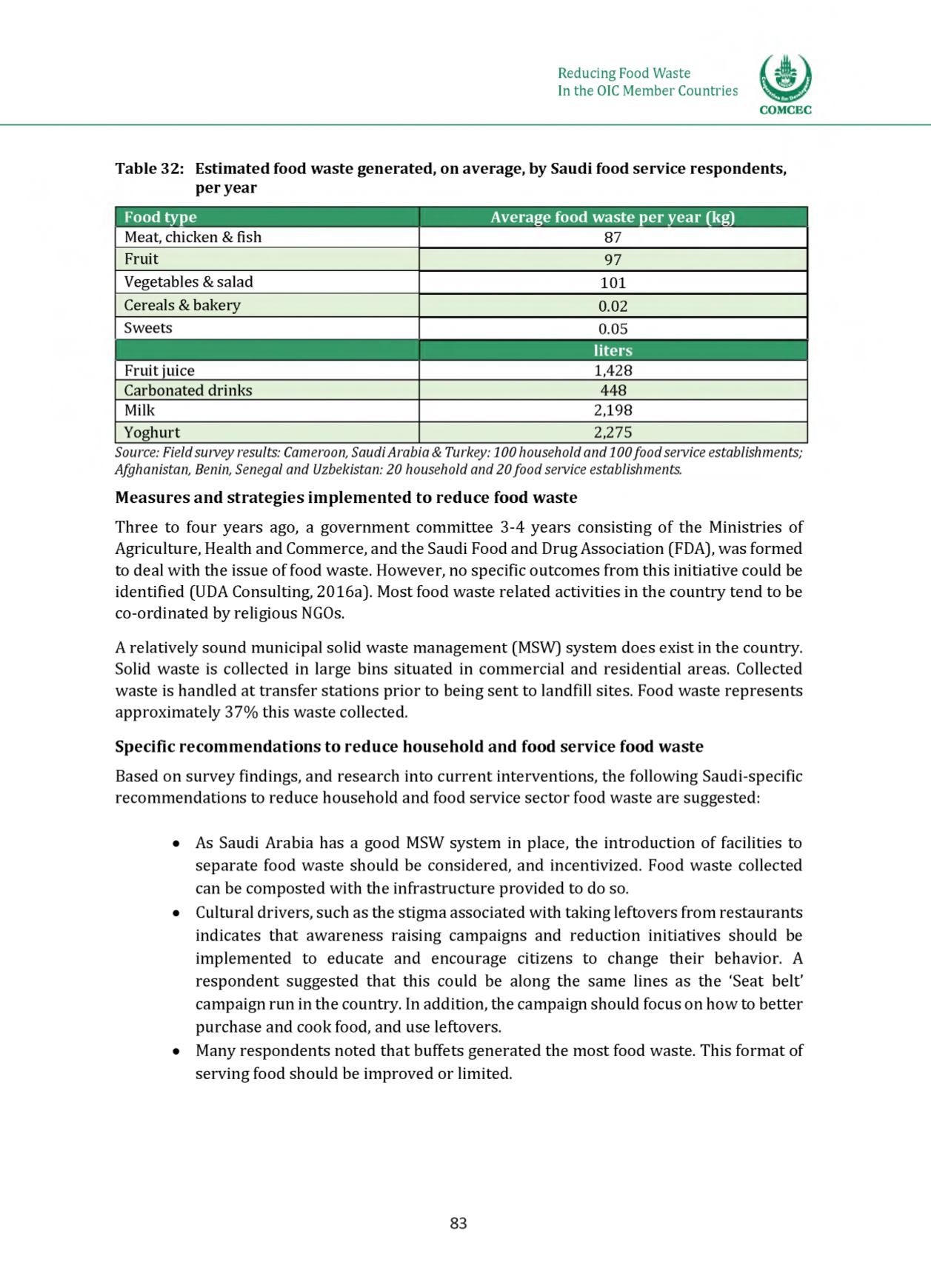

COMCEC
Reducing Food Waste
In the OIC Member Countries
Table 32: Estimated food waste generated, on average, by Saudi food service respondents,
per year
Food type
Average food waste per year (kg)
Meat, chicken & fish
87
Fruit
97
Vegetables &salad
101
Cereals &bakery
0.02
Sweets
0.05
liters
Fruit juice
1,428
Carbonated drinks
448
Milk
2,198
Yoghurt
2,275
Source: Field survey results: Cameroon, SaudiArabia & Turkey: 100 household and 100food service establishments;
Afghanistan, Benin, Senegal and Uzbekistan: 20 household and 20food service establishments.
Measures and strategies implemented to reduce food waste
Three to four years ago, a government committee 3-4 years consisting of the Ministries of
Agriculture, Health and Commerce, and the Saudi Food and Drug Association (FDA), was formed
to deal with the issue of food waste. However, no specific outcomes from this initiative could be
identified (UDA Consulting, 2016a). Most food waste related activities in the country tend to be
co-ordinated by religious NGOs.
A relatively sound municipal solid waste management (MSW) system does exist in the country.
Solid waste is collected in large bins situated in commercial and residential areas. Collected
waste is handled at transfer stations prior to being sent to landfill sites. Food waste represents
approximately 37% this waste collected.
Specific recommendations to reduce household and food service food waste
Based on survey findings, and research into current interventions, the following Saudi-specific
recommendations to reduce household and food service sector food waste are suggested:
• As Saudi Arabia has a good MSW system in place, the introduction of facilities to
separate food waste should be considered, and incentivized. Food waste collected
can be composted with the infrastructure provided to do so.
• Cultural drivers, such as the stigma associated with taking leftovers from restaurants
indicates that awareness raising campaigns and reduction initiatives should be
implemented to educate and encourage citizens to change their behavior. A
respondent suggested that this could be along the same lines as the ‘Seat belt'
campaign run in the country. In addition, the campaign should focus on how to better
purchase and cook food, and use leftovers.
• Many respondents noted that buffets generated the most food waste. This format of
serving food should be improved or limited.
83
















